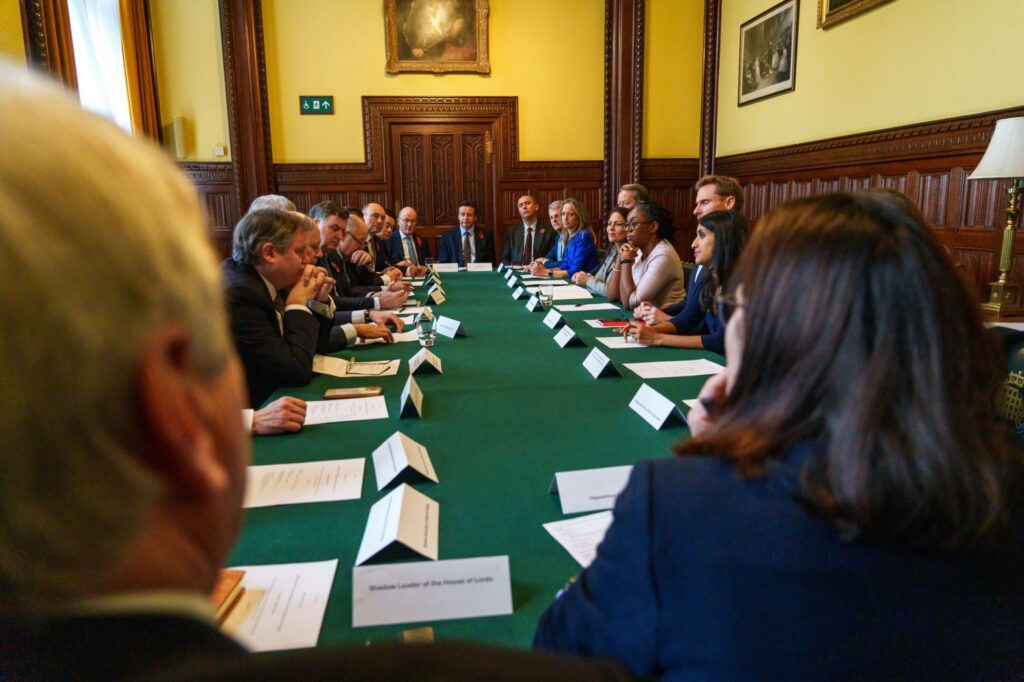While much of the political focus in recent days has been on the bitter contest for the White House on the other side of the Atlantic, the final throes of an occasionally fractious and lengthy campaign for the Conservative leadership have finally played out over here.
While it may seem that in the wake of a bruising defeat in July’s general election whoever leads the Conservative Party this early in this Parliament is of little importance, the surprisingly fragile nature of Labour’s early days in Government has given the Tories some hope that their time in their wilderness may not be that long.
With that in mind, the party has turned to Kemi Badenoch. Her star has been rising for some time though not without a few challenges along the way. As the field was slowly reduced, she became a clear favourite even among those not on the right who didn’t want her opponent Robert Jenrick to succeed,
Her selection signals a shift in approach, with Badenoch tasked to reshape the party and re-establish its identity in opposition to a Labour government with a large majority but weakening public support. Yet, her leadership style and policy focus raise questions about the party’s future direction.
A shift in tone and focus
Kemi Badenoch is well-known for her uncompromising stance against progressive politics, which appeals to a vocal and influential segment of the Conservative base. Her firm opposition to what she describes as the “woke agenda” has become her defining trait. But will this focus on cultural issues unify the party and resonate with the wider electorate, or deepen existing rifts?
Centrists within the Conservatives, who favour economic recovery and climate action, may feel uneasy with Badenoch’s approach even if they saw her as the lesser “evil” of the final two. The risk is that a shift further to the right could alienate moderate members and push even more natural Tory voters towards Labour or the Liberal Democrats. Balancing these ideological differences will be one of Badenoch’s greatest challenges as she seeks to present a cohesive opposition.
Assembling a cabinet
Her emphasis on unity and a renewed Conservative identity suggests she is positioning the party to confront Labour with greater clarity and strength. However, by excluding moderate factions, she risks leaving some influential party voices feeling sidelined.
Her appointments , notably including Mel Stride and Robert Jenrick (who hesitated before accepting his role, given past disagreements with Badenoch during the contest), show only a limited effort toward representing a full spectrum of party perspectives, with no prominent roles for One Nation Conservatives or key figures like James Cleverly and Tom Tugendhat (who apparently declined a role).This shift appears intentional, as she describes her shadow cabinet as a meritocratic team, balancing experience with vision.

The regional challenge
Outside of its traditional heartlands, the Conservatives face serious challenges in Scotland, Wales, and the North of England, where they suffered significant losses. Badenoch’s reputation as a staunch Unionist may appeal to some Scottish voters, but her uncompromising rhetoric could alienate others who are increasingly supportive of progressive policies.
In Wales, where the party was nearly wiped out, Badenoch will need a tailored approach to engage voters, especially around devolved powers and regional economic growth. Her caution on further devolution could alienate those who see regional autonomy as a solution to economic disparity.
In Northern England’s former “Red Wall” constituencies, Badenoch’s emphasis on traditional British values may find support. But to win back these areas, she will need more than rhetoric—real investment in infrastructure, jobs, and local communities will be required. Whether she will continue the “levelling up” agenda or distance herself from Johnson-era policies remains to be seen.
Beyond the culture wars
For Badenoch, moving beyond cultural issues to address core economic challenges will be an essential test. She will likely adopt a pro-business approach centred on low taxation to stimulate growth but will this be enough to present a cohesive post-Brexit vision that appeals to both business and working-class voters climate policy could prove divisive.
Badenoch’s scepticism of net-zero goals may resonate with older, conservative voters but risks alienating younger and more moderate supporters who see climate action as vital. In immigration and national security, she is expected to take a tough stance, reinforcing her commitment to law and order while appealing to the Conservative base. However, this approach may intensify debates on multiculturalism, especially in urban areas.
Defining a Conservative counter-offer
Kemi Badenoch has a challenge to craft a Conservative alternative that embodies both innovation and enterprise, appealing to both working-class and business-focused voters. Yet, to gain traction, the Conservatives will need more than a policy of tax cuts. Badenoch must also address economic inequality and rebuild trust in regions that feel overlooked.
Under her leadership, the Conservative party faces a critical juncture. It will be in opposition for at least five years and possibly longer. To have a chance in 2029, it will have to appeal beyond its base. Her focus on cultural issues may energise the party’s core supporters but risks alienating a broader audience. The question remains whether she can reach beyond the base to present a balanced and compelling vision that helps steer the party back to relevance amidst a constantly shifting political landscape.



